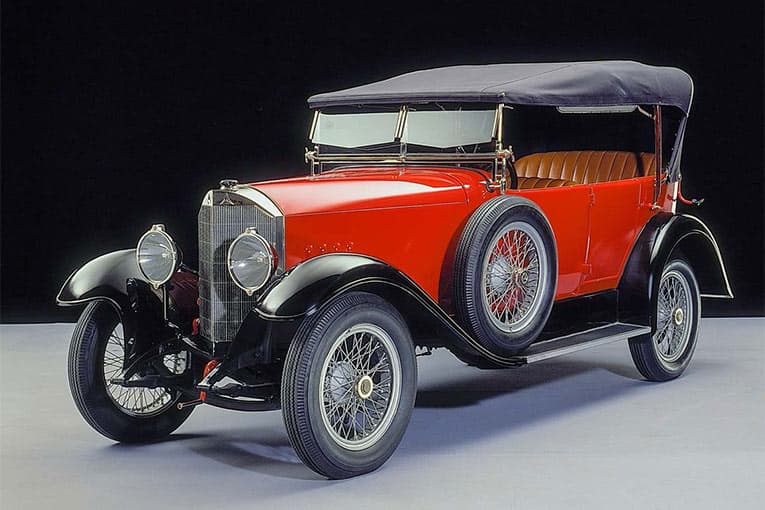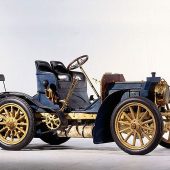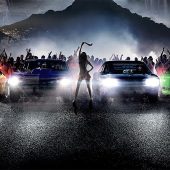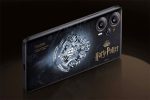Daimler-Motoren-Gesellschaft (DMG) used the valuable experience gained with the supercharging of aircraft engines for boosting the power of vehicle engines for the first time after World War I – and a new performance category was born. The first supercharged Mercedes models were displayed at the Berlin Motor Show in 1921 and caused quite a stir among automotive experts. Racing cars were equally equipped with superchargers, and in April 1922, Max Sailer won the production car class of the Targa Florio at the wheel of a supercharged 28/95 hp Mercedes.
The first cars were followed, for instance, by the 15/70/100 hp Mercedes (1921 – 1924, later renamed model 400), the 24/100/140 hp Mercedes (1924 – 1929, later renamed 630) and the 630 K (1926 – 1929). They dwarfed the competition with their sheer size alone, as exemplified by the legendary supercharged Mercedes-Benz sports cars from the S series with six-cylinder engines, i.e. models S (Sport), SS (Super – Sport), SSK (Super – Sport – Kurz) and SSKL (Super – Sport – Kurz – Leicht), “Kurz” standing for short and “Leicht” for light. The S models came onto the market from 1927, one year after the merger of DMG and Benz & Cie. into Daimler-Benz AG, and they became the benchmark in the category of super sports cars. They dominated the motor sport scene until 1933 – creating a legend in acoustic terms as well. This was because the engines’ enormous power development was accompanied by the distinctive sound of the supercharger, a high-frequency screeching of the air compressed in the chargers. Contemporaries compared the howling with a concert of the “Trumpets of Jericho”. The more mythically inclined felt reminded of the “Valkyries’ battle cry” or suspected a “howling goddess of vengeance” under the long engine hood. The character of the early sports cars with supercharged engines was best summarized by the line “Thunder and lightning” with which the British classic-car magazine Classic and Sportscar once described the appearance of a Mercedes-Benz SSK in the classic Shelsley-Walsh hillclimb race.

Expression of performance, luxury and maximum exclusiveness
From 1930, the supercharger was also used, in acoustically damped form, in the brand’s famous eight-cylinder cars, the Mercedes-Benz 380, the 500 K and 540 K. These differed from the previous cars in their character in that they had been designed for fast and comfortable travel rather than racing. At the same time, these and other models were expressions of performance, luxury and maximum exclusiveness. Each individual car was manufactured by hand, often precisely to the wishes and ideas of customers.
The claim to perfection which prevailed in the design and manufacture of the supercharged Mercedes-Benz cars was the foundation for the fascination these cars have been exuding to this very day. Whether in the world’s leading Concours d’Elegance, in historical racing events or in reliability trials – a supercharged car from Mercedes or Mercedes-Benz moves into the limelight wherever it appears.
Supercharged models from the 1920s and 1930s all have one thing in common: they represent the ultimate in automotive engineering in their respective era. To drive them, to hear the shriek of the mechanical charger, to feel the power of its engine, to enjoy the luxury of the refined ambience or to compete in racing at the wheel of an S model – that was clearly the crowning glory of motoring.
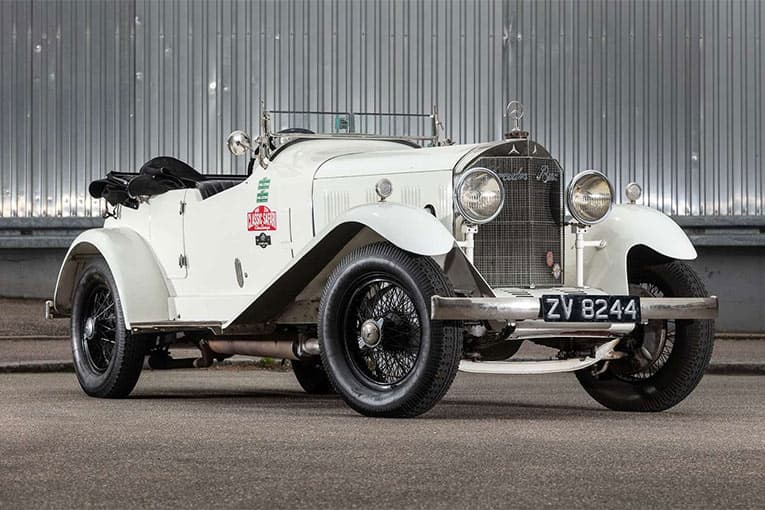
The small production volume turned the supercharged cars from Untertürkheim into exclusive collectors’ items for just a few privileged enthusiasts. These cars are therefore hard-fought-for stars at classic-car auctions. In the auctioneers’ catalogues, they are usually depicted without the recommended prices which are otherwise customary. Someone who really appreciates such a car does not have to have it valued.
The supercharged cars also exemplify the enormous range in the portfolio of Mercedes-Benz in those days, from everyday models at the one end, affording sound and technically perfect mobility, through to the supercharged cars at the other end, which met the highest demands on outstanding engine power and the most refined equipment. This ambition of Mercedes-Benz, namely to meet the customers’ needs perfectly in every respect, is today as strong as ever, as demonstrated by products ranging from the A-Class through to the AMG versions of the luxury-class models.
Incidentally, present-day supercharged Mercedes-Benz models share nothing but the designation with the first and second generation of supercharged cars from the early years. In today’s models, the supercharger boosts output and torque discreetly and permanently while at the same time ensuring excellent fuel economy; it contributes to a reduction in weight and, in combination with other components, to improved emission control as well.
